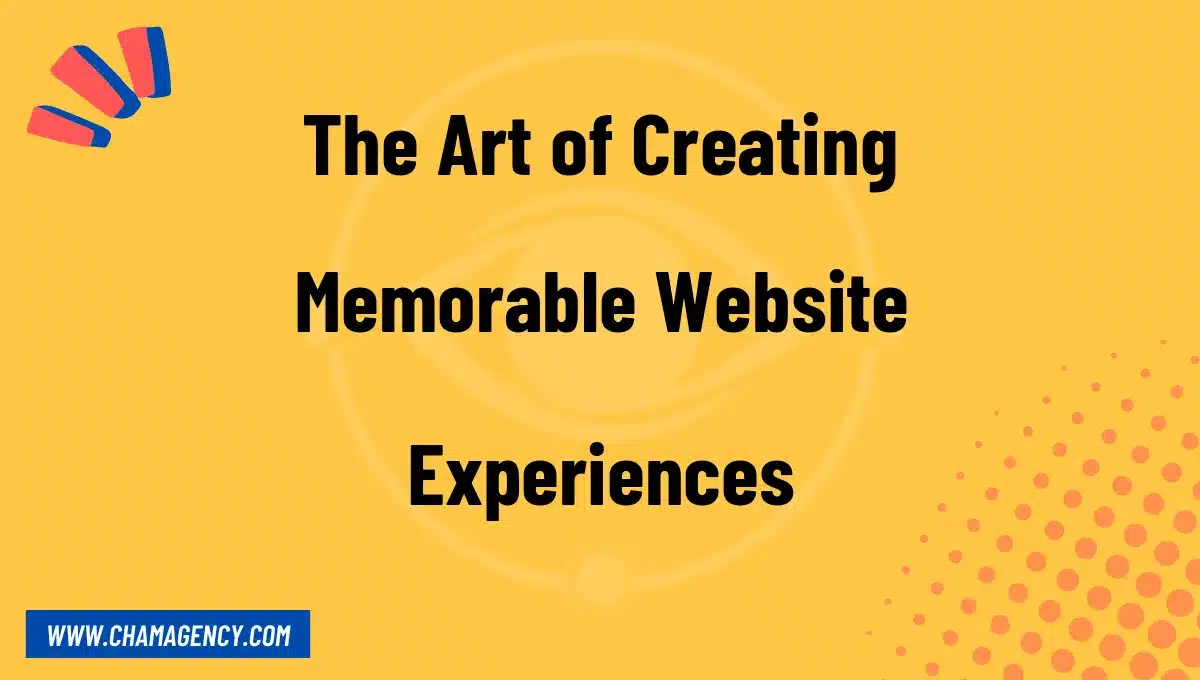In the digital age, where websites are a crucial part of any business or brand’s online presence, creating
memorable website experiences is essential. A memorable website not only attracts visitors but also keeps them
engaged, encourages them to explore further, and ultimately converts them into loyal customers. In this article,
we will explore the key elements that contribute to creating memorable website experiences.
1. User-Centric Design
One of the fundamental aspects of creating a memorable website experience is adopting a user-centric design
approach. This involves understanding the target audience’s needs, preferences, and behaviors and designing the
website accordingly. A user-centric design ensures a seamless and intuitive browsing experience, making it easy
for visitors to navigate, find information, and accomplish their goals on the website.
Additionally, user-centric design includes optimizing websites for mobile devices, as an increasing number of
users access the internet through smartphones and tablets. Responsive design and mobile-friendly interfaces
enhance the user experience, allowing visitors to interact with the website effortlessly, regardless of the
device they are using.
2. Engaging Visuals and Multimedia
Visual content plays a vital role in capturing visitors’ attention and creating a lasting impression. By using
high-quality images, videos, and animations, websites can convey their brand identity, evoke emotions, and
communicate messages effectively. Engaging visuals not only make the website aesthetically pleasing but also
enhance the overall user experience.
However, it’s crucial to strike a balance between using visuals and maintaining a fast loading speed. Optimizing
image and video sizes, implementing lazy loading techniques, and using content delivery networks (CDNs) can help
mitigate any performance issues that may arise. This ensures a seamless browsing experience for visitors,
preventing them from getting frustrated and leaving the website prematurely.
3. Compelling and Relevant Content
Content is key when it comes to creating a memorable website experience. It is essential to provide visitors
with high-quality, relevant, and engaging content that aligns with their needs and interests. Well-written blog
articles, informative product descriptions, and persuasive calls-to-action all contribute to keeping visitors
engaged and converting them into customers.
To optimize content for search engines and improve organic visibility, incorporating SEO best practices is
crucial. This includes conducting keyword research, utilizing appropriate heading tags, incorporating internal
and external links, and ensuring proper meta descriptions. By doing so, websites can not only attract more
organic traffic but also enhance the user experience through easy navigation and information accessibility.
4. Intuitive Navigation and Clear Calls-to-Action
A website’s structure and navigation have a significant impact on the user experience. Creating a logical and
intuitive navigation system allows visitors to find what they are looking for quickly, reducing the chances of
frustration and helping them to stay engaged with the content.
Additionally, clear and compelling calls-to-action guide visitors towards desired actions, whether it’s making a
purchase, subscribing to a newsletter, or contacting the company. Well-designed buttons, prominent placement,
and concise yet persuasive copy encourage visitors to take the desired actions, thus increasing conversions and
improving the overall website experience.
Conclusion
Creating memorable website experiences requires a combination of user-centric design, engaging visuals and
multimedia, compelling content, intuitive navigation, and clear calls-to-action. It is a multi-faceted approach
that aims to provide visitors with a seamless and enjoyable browsing experience, encouraging them to stay longer,
interact with the content, and ultimately convert into loyal customers. By incorporating these elements into the
website development process, businesses and brands can differentiate themselves from their competitors and leave
a lasting impression on their target audience.





